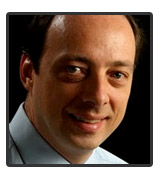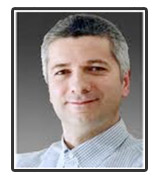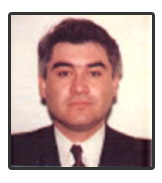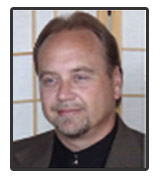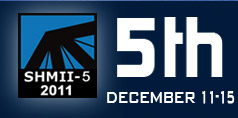

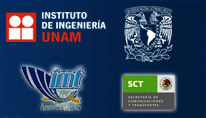

| General Program | |
| Keynote Lectures | |
| Invited Speakers | |
| SHM Short Course | |
| Social Program |
![]()
Deadline Dates |
|
Short Course on SHM and Instructional Workshop
The technical program includes a short course and an instructional workshop to be held prior to the conference.
Short Course on SHM
Structural health monitoring (SHM) is a process aimed at providing accurate and in-time information concerning structural health condition and performance. The information obtained from monitoring is generally used to increase the safety, plan and design maintenance activities, verify hypotheses, reduce uncertainty, and to widen the knowledge concerning the structure being monitored.
Recent developments in fiber optic sensing (FOS) technologies made possible global structural monitoring using long-gauge sensors and integrity monitoring using truly distributed sensors. These sensors combined in appropriate topologies and networks can provide for assessment of wide range of parameters relevant for structural behavior.
The aim of this course is to transfer the knowledge on SHM and FOS. Targeted groups are those who can take benefits from SHM: civil engineers, practitioners, consultants, contractors, infrastructure managers, and owners. Researchers on SHM are welcome too.
Covered topics include brief introduction to the SHM, overview of available FOS technologies, and SHM methods based on FOS technologies. The topics are illustrated through numerous examples taken from practice.
Instructional Workshop: Optical Fiber Bragg Grating Sensing Technology for SHM
The instructional workshop is the hands-on, experimental portion of the short course. This workshop will review the use and application of FBG sensors for strain & stress, acceleration, displacement, temperature and other parameters is made, along with discussions on sensor placement & installation, data analysis and interpretation. To reinforce the theoretical concepts and illustrate the practical aspects of the technology, a number of hands-on demonstrations of FBG sensors and instruments will be made.
Learning Outcomes
This course will enable the participant to:
• understand the operating principles, characteristics and advantages of optical fiber Bragg grating (FBG) sensors
• review a wide range of sensor types for the measurement of materials properties and structural characteristics
• learn the required building blocks that make up a SHM system
• illustrate specific sensing solutions and their benefits in applications for civil structures, aerospace, composite materials, FRP elements, railways, naval vessels, oil & gas, and others.
• obtain an overall view of fiber sensors, the SHM industry and its trends
Intended Audience
Technical managers, scientists, engineers, technicians and research students who wish to learn about sensing and structural monitoring via optical fiber sensors and review their implementation and applications. The workshop is also suitable to gain an overview on the field of smart structures and learn about the state-of-the-art in on-line monitoring techniques of civil engineering, aerospace and composite structures and components.
Course Level
Introductory to intermediate
Course Fees
The registration fee includes all written materials, lunch and coffee breaks
Fees are in US dollars and include all taxes.
Conference fees may be paid by PayPal and Bank Transfers during the on line registration/payment process. Additional processing fees might apply for bank transfers.
Regular attendee $265
Student $85
Short Course and Instructional Workshop Schedule (Sunday, December 11, 2011)
Time |
Lectures and Activities |
Instructor |
Duration |
9:30-9:45 |
Registration, distribution of material, participant introductions |
|
15 min. |
9:45-10:20 |
Short introduction to SHM system design methodology |
Daniele Inaudi |
35 min. |
10:20-11:00 |
Overview of Fiber Optic Sensing technologies |
Daniele Inaudi |
40 min. |
11:00-11:45 |
Monitoring projects – examples from practice: |
Daniele Inaudi |
45 min. |
11:45-12:00 |
Break |
|
15 min. |
12:00-12:45 |
Sensors types and interpretation of measurement |
Branko Glisic |
45 min. |
12:45-13:15 |
Sensor topologies and global structural monitoring |
Branko Glisic |
30 min. |
13:15-14:00 |
Data analysis – examples from practice: |
Branko Glisic |
45 min. |
14:00-14:15 |
Break |
|
15 ,min. |
14:15-16:00 |
Review of installation techniques and field practices |
Alexis Mendez |
105 min. |
16:00-17:00 |
Hands-on demo |
Wiliam K. Chandler |
60 min. |
Daniele Inaudi is co-founder and CTO of SMARTEC SA and CTO of Roctest.
He is fellow and member of the executive committee of ISHMII and is an active member of IABMAS, OSA, SPIE, IABSE and fib. Daniele Inaudi is author of more than 200 papers, five book chapters, a book on "Fiber Optic Methods for Structural Health Monitoring" and editor of a book on Optical Nondestructive Testing.
